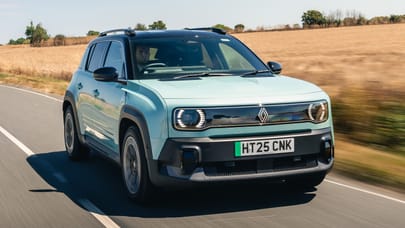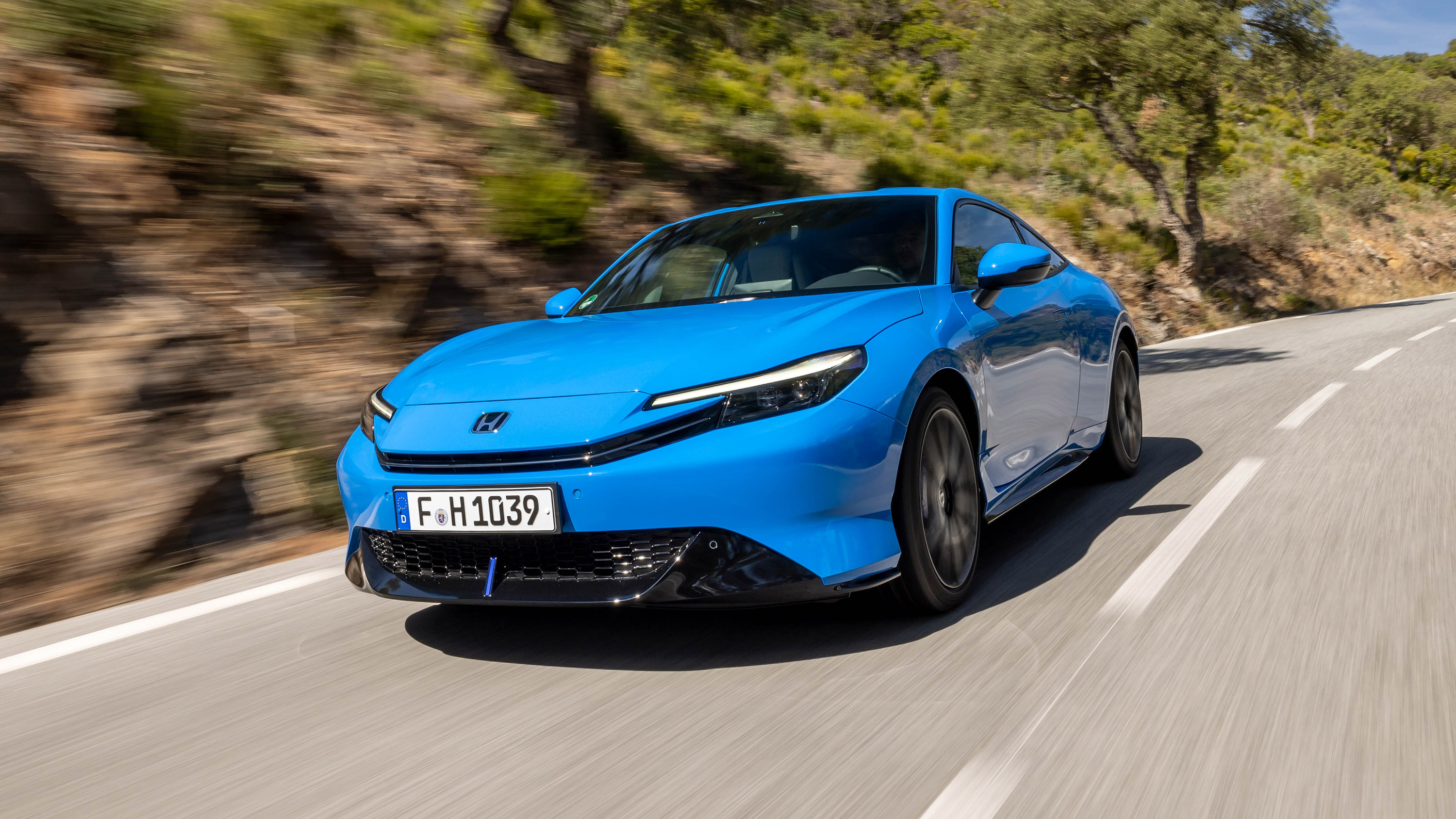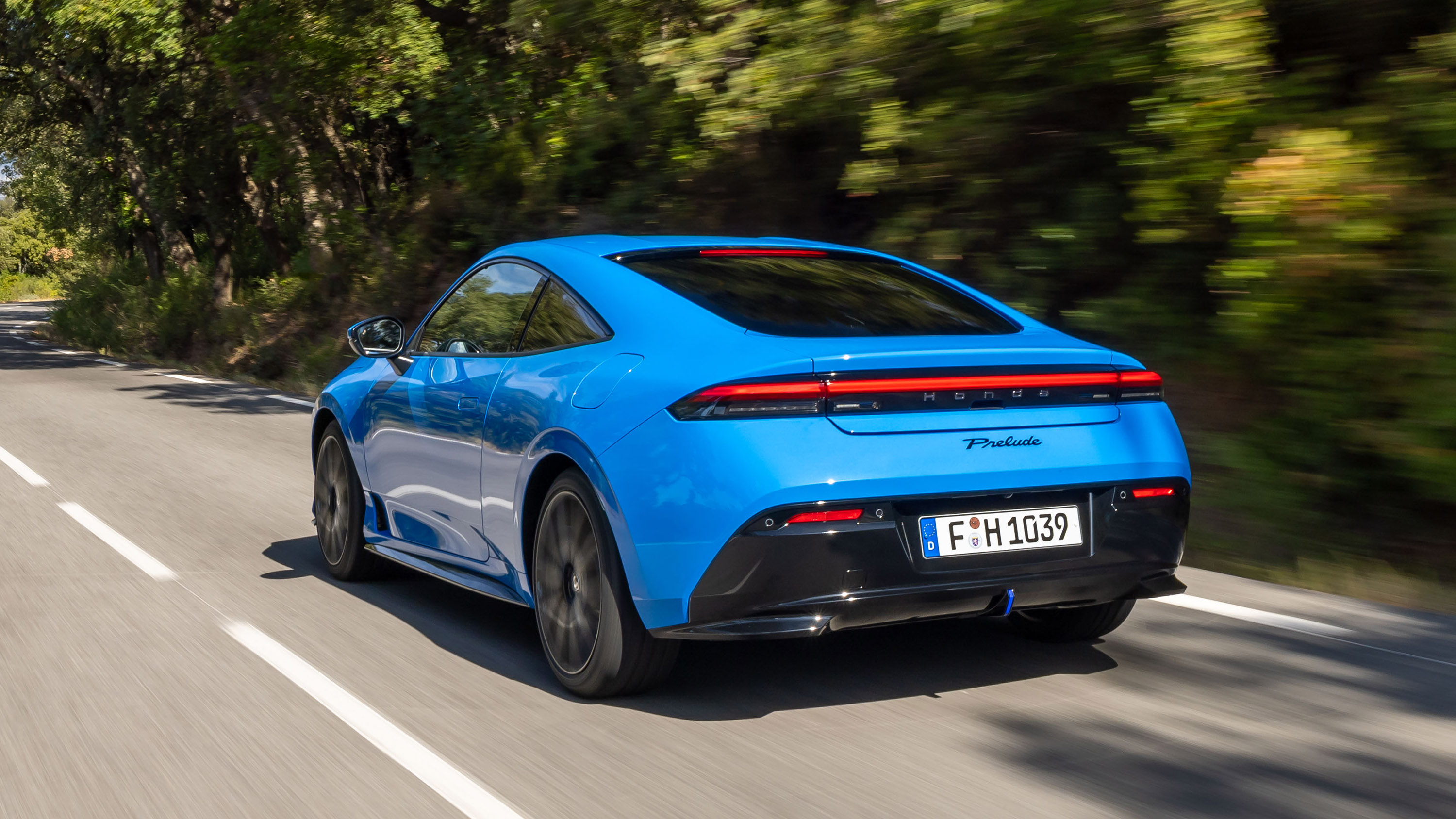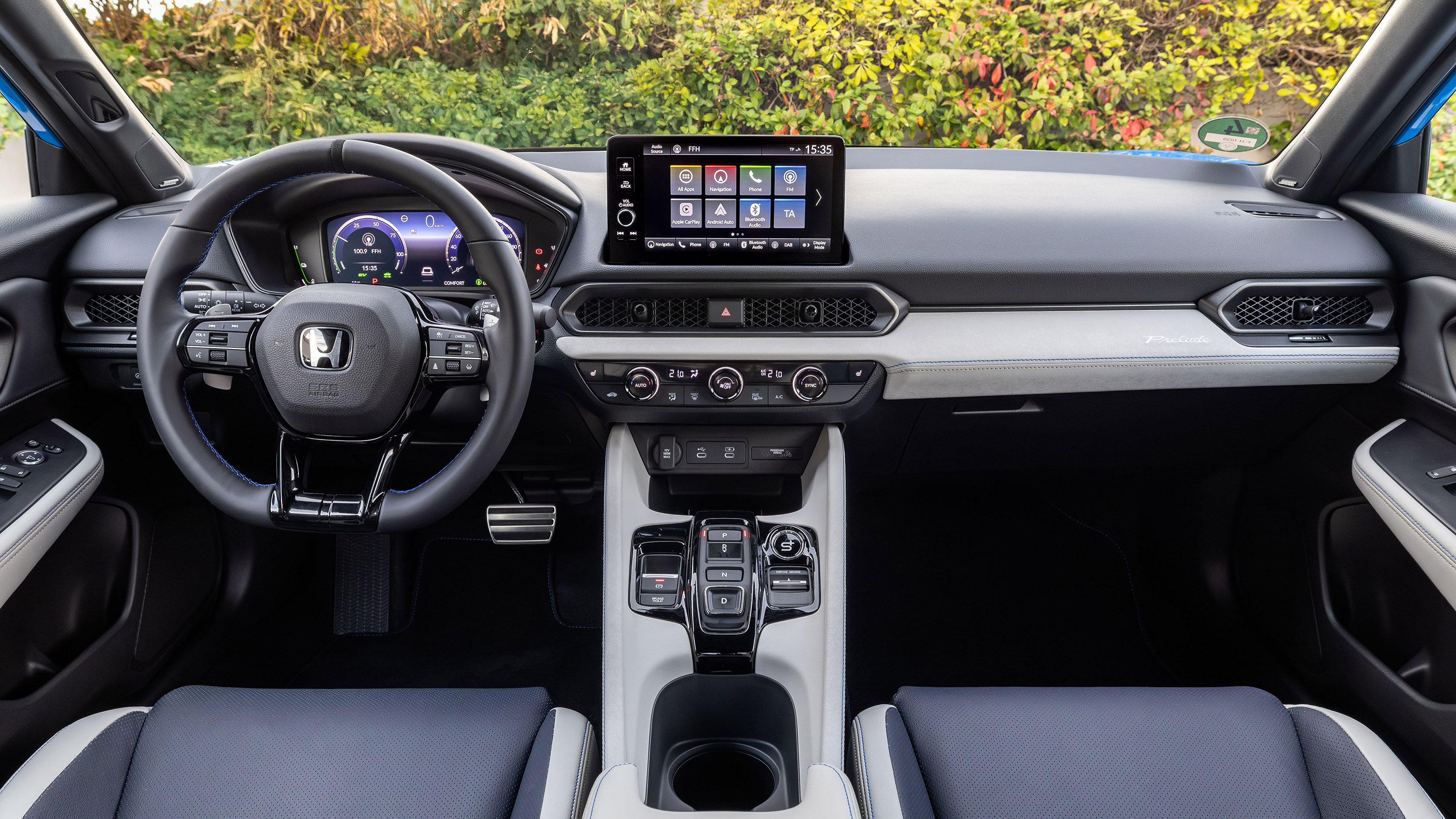
Driving
What is it like to drive?
The Honda engineers deployed numerous graphs to explain why 181bhp really is enough for the Prelude to be getting on with, a response to the inevitable social media takedown when the car was first announced. Too much protestation, perhaps, and while enthusiasts like us know that a 0-62mph time never wholly defines a performance car, eight-point-odd seconds is a hard sell to anyone.
But this is a clever and ultimately very refined powertrain, with Honda’s finely detailed focus on weight clearly wringing out as much rapidity as possible from a setup intrinsically designed for efficiency. And hey, 117g/km of CO2 and 54.3mpg feel incongruously good in something that looks as slick as this.
So. Is it fun?
Yes, in a word. The car feels spectacularly over-chassised in your early miles, its winning repertoire of grip, balance and precision clearly able to handle a lot more performance than it’s being served.
The Prelude makes the very best of the components it’s been given and is a joy to keep pushing harder and harder on a good piece of road, all the while knowing it’ll settle right back down to an easygoing cruise once your adrenaline is spent. Its grip is carefully spread across all four corners, with no tyre squeal or errant wheelspin, while its brake pedal (with a bespoke Brembo system at the end of it) is strong and trustworthy.
No single element of the car truly dazzles, but together they all form a cohesive whole that you can tell real handling nerds have poured their heart and soul into. And you don’t actually feel its various systems – such as the nipped braking of AHA – at work, proof that they’re woven well into the overall experience.
And what of those fake gears?
S+ became our default while driving the car, whether leaving it to shuffle ‘gears’ itself in the background like an automatic or grabbing the paddles and getting stuck in ourselves. With eight ratios across a modest 117mph spread (yup, that's its top speed...), the ratios are short and genuinely engaging when you’re in the mood.
Curiously, it doesn’t stay in manual-only mode for long, and it’s not always perfect in its operation – but it’s knocking on the door of where an Ioniq 5 N operates even if it stops 2,000rpm short of the Hyundai’s redline and can be a little overeager in its rev-matching. You’ll lose your first date swagger if you’ve got anyone but another car enthusiast in the passenger seat.
Are there drive modes?
But of course. There are seven levels of brake regen, only operable when you’re not using S+, and we simply didn’t have time to figure them out. Not least because the car quickly returns itself to the middlemost one and doesn’t actually let you stick in one, favoured regen mode. Odd.
There’s also overarching Comfort, GT and Sport setups which play with the powertrain, steering, adaptive damping, engine sound and the digital instrument display, with a pick ‘n’ mix Individual mode. The car defaults into GT on start up and is nice enough left that way. Even with everything ramped up, this never feels anything but a precisely honed FWD car, never elevating above its station like a fully lit Integra Type R used to. But this is a different, more liveable proposition.
You’re sure 181bhp is enough?
There’s enough power to build a satisfying flow on a favourite road, but not quite enough to execute strident overtakes of any dawdling traffic that’s stifling your fun. The Prelude is just quick enough but rarely more; it can accelerate with more optimism than its spec sheet suggests but much of its excitement – and sensation of speed – comes from the synthesised sound and shifts, suggesting S+ is less of a gimmick and more of a necessity to distance itself from a Civic or ZR-V.
Fine by us, really. It’s a curiosity, this gen6 Prelude, but a smartly engineered one that we’re mighty glad is here. The big question is whether they’ll ever give that demonstrably capable chassis any more power. Whether that comes from an off-script engine transplant from the Civic Type R or a full EV version (the petrol filler cap is curiously large and could clearly accommodate a CCS port), who’s to say. The glints in the eyes of its makers suggest this isn’t quite the end of the story.
Featured

Trending this week
- Car Review
BMW 1 Series
- Top Gear's Top 9
Nine dreadful bits of 'homeware' made by carmakers






